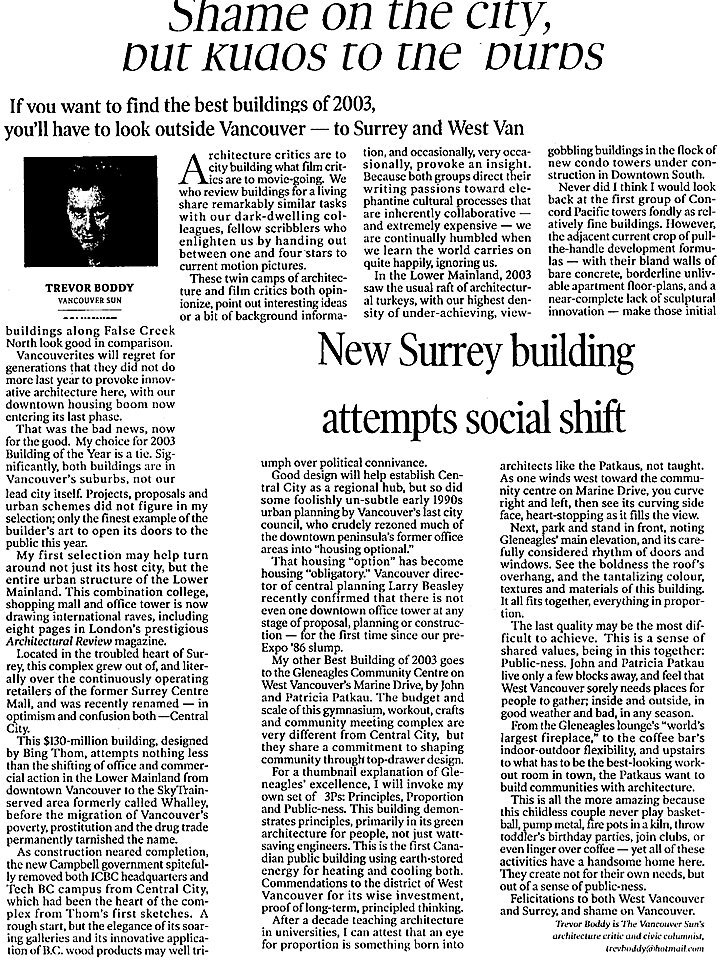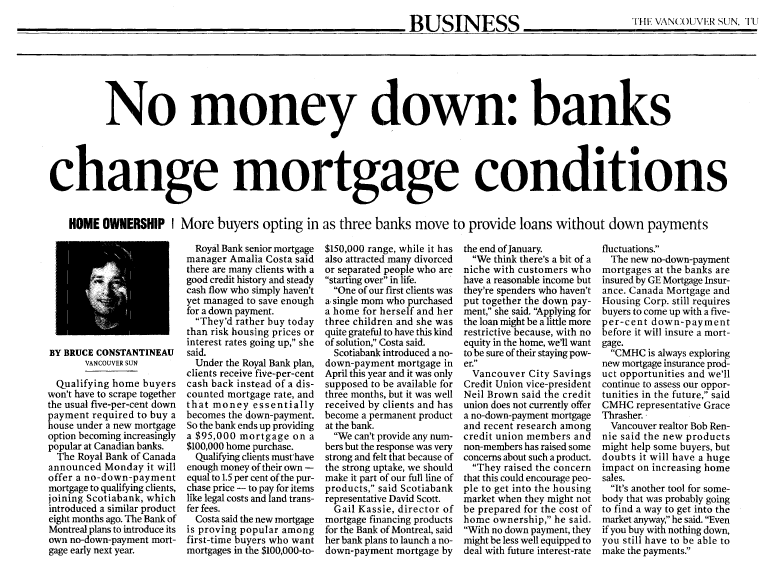Criminals with lots of cash use various ways to make it look legitimate
Neal Hall
Sun

RCMP spokesperson Russ Grabb with some of the $1.23 million seized following a 1998 investigation of a drug operation. CREDIT: Steve Bosch, Vancouver Sun
Money laundering occurs when criminals turn cash made from illegal activities into “clean” money through what appear to be legitimate business enterprises.
The issue arose this week when RCMP announced that a 20-month investigation into marijuana trafficking and cocaine importing led to police executing search warrants at various locations, including the legislature offices of two non-elected staff members.
“I can say that in general, the spread of organized crime just in the past two years has been like a cancer on the social and economic well-being of all British Columbians,” RCMP Sergeant John Ward said.
“Today, the value of the illegal marijuana trade alone is estimated to be worth in excess of $6 billion. We are seeing major increases in organized crime-related murders, beatings, extortion, money laundering, and other activity which touches many innocent lives.”
Drug trafficking generates huge amounts of cash for organized crime, which “launders” illegal profits to avoid prosecution, increase wealth and evade taxes, according to an RCMP report on money laundering.
“The principal objective of money laundering is to convert cash to some other form of asset, to conceal the illegal source or origin of cash income,” says the report by the RCMP proceeds of crime branch.
“Criminals eventually use these funds, ascribed to a ‘legitimate’ source, which then cover the tracks of the illegitimate business that generated the cash in the first place.”
Police say the amount of laundered money in Canada‘s financial system is staggering.
“Drug trafficking alone generates billions of illegal dollars for criminal organizations every year,” the report said. “Although it is difficult to pinpoint the exact amount, it is clear that the problem is vast.”
The report says money laundering has devastating social consequences, in that illegally gained funds provide financial support for drug dealers, terrorists, arms dealers and other criminals to operate and expand their criminal empires.
According to the report, money laundering methods include:
– Smurfing. Probably the most commonly used method, it involves many individuals who deposit cash or buy bank drafts in amounts under $10,000. This method is common to both Canada and the U.S. Deposits of more than $10,000 have to be reported by banks.
– Bank complicity. A co-opted bank employee facilitates illegal money laundering.
– Currency exchanges. They provide a service that permits buying foreign currency that can be transported out of the country. Money can also be wired to offshore bank accounts.
– Securities brokers. A stock broker can take large wads of cash and issue securities in exchange.
– Asset purchases with bulk cash. Money launderers purchase such big-ticket items as cars, boats, planes or real estate. In many cases, launderers may use the asset but will distance themselves by having assets registered in the name of a friend or trusted associate.
– Electronic transfer of funds. Wiring money from one city or country to another. This can be done using “dummy” companies set up for money laundering.
– Postal money orders. Cash is exchanged for money orders, which are then shipped out of the country for deposit.
– Credit cards. Criminals often overpay credit cards and keep a high credit balance that can be turned into cash at any time and place.
– Gambling in casinos. Cash can be taken to a casino to purchase chips. After gambling, chips can be redeemed at the cashier’s cage, where a casino cheque is issued.
– Refining. Individuals change small bills into large ones by visiting a number of banks so as not to arouse suspicion. The purpose of refining is to decrease the bulk of larger cash quantities. Drug deals, for example, often involve large amounts of $20 bills.
– Legitimate business/commingling of funds. Criminals take over or invest in businesses such as restaurants, hotels, nightclubs or vending machines that handle a high cash volume, thereby mixing illicit proceeds with legitimate business.
– Reverse flip. A money launderer may find a cooperative property seller who agrees to a reported purchase price well below the actual value and then accepts the difference “under the table.” The launderer can, for example, purchase a $2 million property for $1 million and, after holding the property for some time, sell it for its true value of $2 million.
– Loanback. A criminal provides an associate with a specific amount of illegitimate money. The associate then provides a “loan or mortgage” back to the trafficker for the same amount with all the necessary “loan and/or mortgage” documentation. This creates an illusion that the trafficker’s funds are legitimate. The scheme is reinforced through “legitimately” scheduled payments made on the loan by the traffickers.
The RCMP says it has had considerable success in attacking the assets of criminals through proceeds of crime legislation.
One five-year B.C. project that concluded in 1997 resulted in more than $17 million in assets being seized by police and eventually forfeited, including: an ocean-going freighter, eight luxury homes worth $1 million to $2 million each, six tugboats, $800,000 in lottery tickets and $1 million in cash, jewellery and other valuables.
© Copyright 2003 Vancouver Sun








